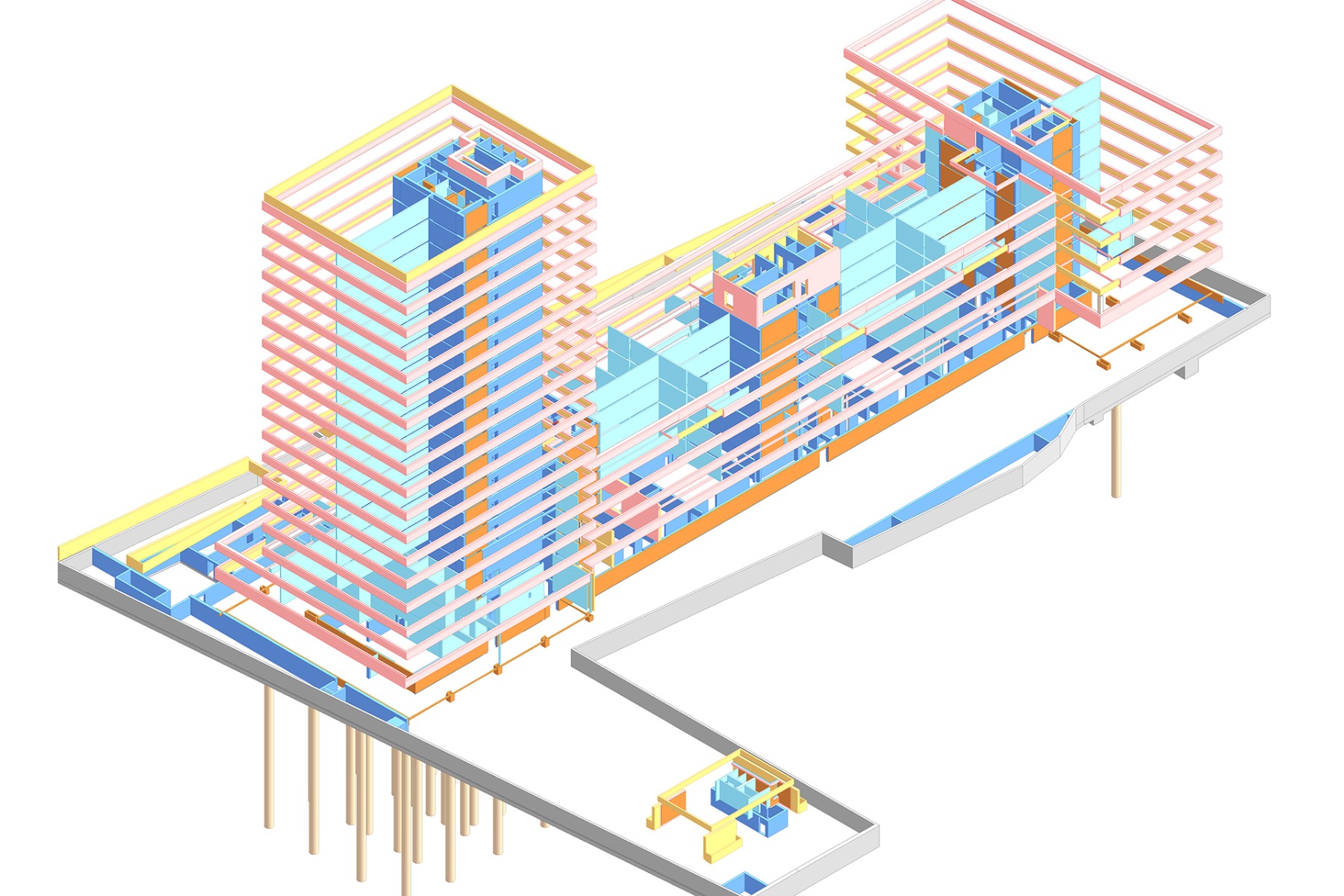BIM strategies in architectural offices
More Equity, Less Silo Thinking

© Sweco Architects Deutschland
Lorem Ipsum: Zwischenüberschrift
According to Arne Löper of Sweco Architects, everyone involved in planning can benefit from BIM − if they exercise sound judgement, overcome static thinking and set shared project success at centre stage.
Over the past few years, which areas of planning and building have undergone the greatest changes thanks to digitization?
BIM is no longer a side issue. Clients, as well as many branches of the industry and the planning studios, are becoming aware of the possibilities offered by this method. The COVID-19 pandemic certainly provides further motivation to digitize the building industry. Nearly all discussions with colleagues had to start taking place in web meetings from one day to the next, and planning teams had to work together from their home offices. For us as Sweco, this meant that we took on a new vitality. For instance, transnational exchanges with our Scandinavian offices have become much more intensive. However, in many offices the first lockdown represented a disruptive change to their self-perception. It will be fascinating to observe how the strategic orientation of post-corona offices will look in the era of the “new normal”. Will we revert to the status quo, but be a bit more digital? Or will we see that the drive towards digitization is being used to further develop BIM capacities as well?
Where are things still not working as you would like them to?
There will always be things that can be improved. This goes for both technical adjustments as well as method-based ones. These can usually be solved with tenacity and open-mindness. But it’s more difficult to effect a shift in the mindset of the active agents. BIM is a collaborative working method. In order to be able to work collaboratively, we must have the courage to overcome our silo mentality, put aside our confrontational behaviour patterns and set shared project success at centre stage, equitable and satisfactory for everyone! What could help here is a new fee structure for architects. If there were awareness on all sides with respect to our scope of work, then the model requirements, some of which are absurdly demanding, would soon disappear from the client information requirements (Ger.: AIA). Practice-oriented solutions not oriented merely at the edges of the theoretically possible would actually have a realistic chance. That would enable unobstructed access to BIM projects for many market participants. Public clients bear particular responsibility here.
What are the most important components of a successful BIM strategy?
To begin, we should create awareness of our own process. This can be helpful in finding the right starting point for implementation. BIM is not just a tedious working through of normalized, model-based steps. In anticipation of a BIM project, we must always clarify to what purpose BIM models should be created. The purpose will find expression in what is known as the “use cases”. There are use cases that appear in similar ways in pretty much every project. As a rule, they’re necessary for ensuring successful planning work. Nowadays, use cases include the derivation of 2D plans, cost planning, geometric model testing and other factors. In addition, the evaluation of building components (quantities and weights, door schedules etc.…) represents worthwhile use cases that can quickly not only increase efficiency, but also provide added value by avoiding errors.
Arne Löper is Head of BIM at Sweco Architects Germany and a member of the board of the BIM Allianz Association.


Dies ist eine Bildunterschrift


Dies ist eine Bildunterschrift


Dies ist eine Bildunterschrift


Dies ist eine Bildunterschrift
KONTAKTFORMULAR / DATEN - NUR ADVERTORIAL - Wird noch hinzugefügt @ Daniel
Hersteller: X
Produkt: Y
Produktkategorie: Z



